
A visit to Jun Chiyabari Tea Garden
It was pandemonium at the Indo-Nepal border: long lines of trucks stalled on the Indian side, crowd milling through haywire traffic, groups of angry men yelling, motorists pounding on their horns, determined families dragging their children and luggage, garbage and dust flying all over.
It would have been typical were it not for the underlying tension in the atmosphere caused by a political strife on the Nepalese side. A blockade was on at the border by a section of disgruntled Nepalese citizens. The rest of the country blamed India for fomenting the trouble, which now had been happening for over a month.
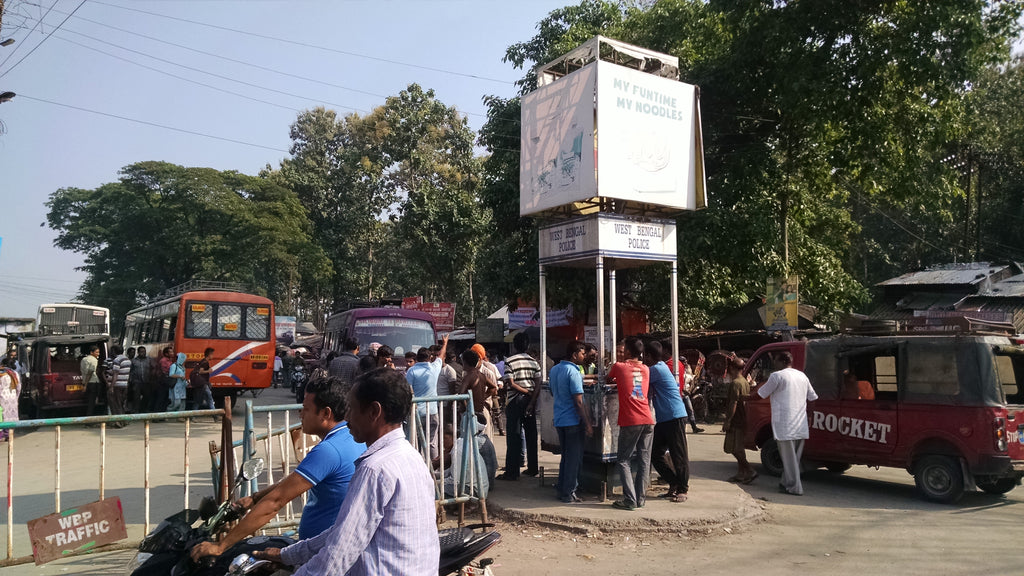
Past the chaos of the border, I arrived at the first Nepalese town of Kakarvitta. Here I met up with Morris Orchard, the manager of Jun Chiyabari Tea Estate, who was going to take me on a four hour drive to the tea garden in his private vehicle. Considering that the trouble at the border had resulted in acute fuel shortage in the country, the ride was an incredible gesture of hospitality.
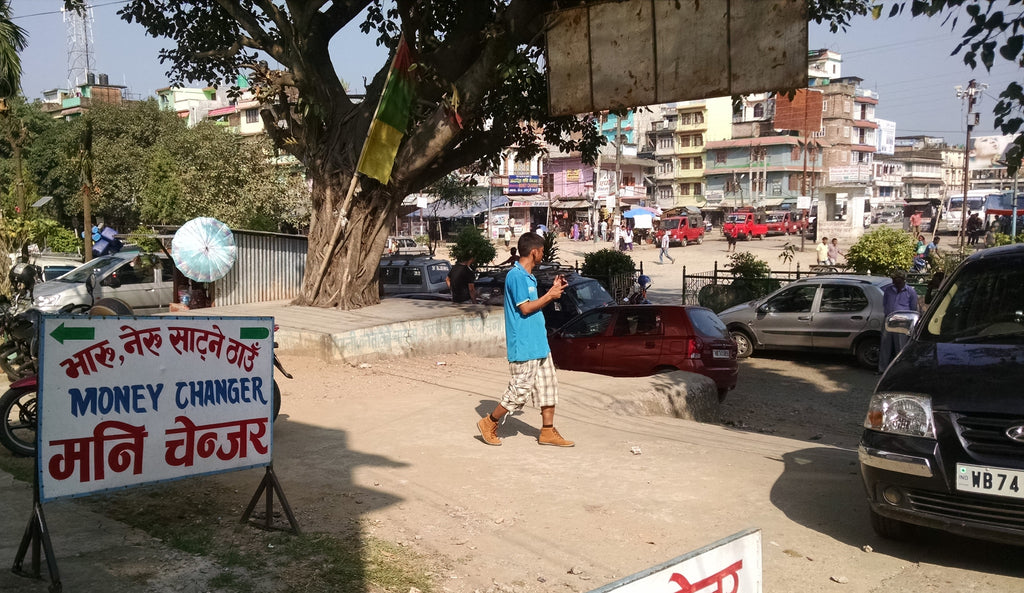
It was a relief to hop into the car with Morris and get away from the chaos of the border. Passing through the the flatlands of the terai, we got to the town of Dharan in about two hours. This town is known for being the preferred retirement home for many of the members of the storied Gurkha regiment of the British army which still functions today and actually guards the Queen of England.
After a lunch break at Dharan, the highway began to scale the hills. We went up the ridge to Bhedetar and then swooped into the valley of the Tamor river before climbing back up again to Dhankuta, the district headquarters and just half hour drive before Hille where Jun Chiyabari tea garden is located.
It was hard not to feel elevated as you drove through these tall majestic hills and deep valleys.
We arrived at Jun Chiyabari after a good four hour drive from the border. We have been selling Jun Chiyabari tea for couple of years now and it was exciting to be finally here, and see for ourselves the place whose tea we had great admiration for!
I was received with a traditional welcome of "tikka" (a dab of vermilion on the guest's forehead) and khata (a silk scarf).
Turns out Morris, with whom I am posing here, is a third-generation planter. His grandfather, an Irishman who was an aviator during the First World War, retired to Darjeeling and became a planter. Morris' father was also a planter, who incidentally worked at a tea garden next to his. Morris left the Darjeeling tea industry and joined Jun Chiyabari nearly eight years ago. He is the man behind all the wonderful teas that Jun Chiyabari makes. Of course he credits the owners and brothers Bachan and Lochan Gyawali for giving him a free hand.
The next morning I have my cup of tea in the patio of the manager's bungalow. I feel immensely blessed at this moment: to have the opportunity to be in this beautiful place, to learn more about tea and to meet incredible people through this vocation.
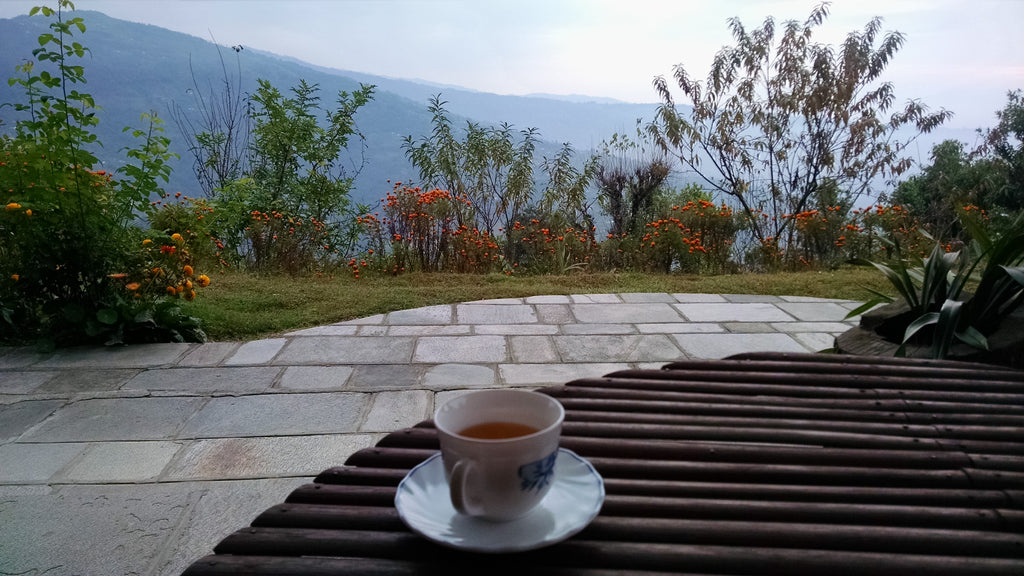
I am finally in the fields witnessing the plucking first hand which had just resumed after Dashain, a major Hindu festival that shuts down the country. Normally, the autumn flush or harvest would be underway but it was delayed as the monsoons lingered longer than normal. The autumn character had still not come in to the leaves yet, said Morris. The autumn leaves have a yellowish hue unlike the "green" of first and second flush.
Interestingly Morris feels they make some of their best teas during autumn. His claim surprised me because traditionally autumn flush is considered a lower quality when compared to the highly regarded first and second flushes. But Morris, as I began to learn, was anything but traditional in his approach. We do plan to acquire some of these teas after they have been produced
Compared to Darjeeling tea gardens, Jun Chiyabari is a fairly small sized garden. Altogether it is around 96 hectares. Also unlike in Darjeeling, Jun Chiyabari does not enjoy a contiguous landscape. Its tea growing plots are found in patches across the hills, some of them a good half day's hike from the factory. This is because they had to buy land from farmers and not all of them were willing to sell. Millet and vegetables are cash crops here.
While acknowledging the challenge of having far flung tea plots, Bachan Gyawali, noted one of the advantages they enjoyed due to the situation. "We have teas with more diverse character because of the disparate locations." This is certainly true: high quality teas that are grown in the hills develop varying nuances depending upon their micro-climates.
Besides some clonal and china bushes from Darjeeling, Jun Chiyabari had also planted some cultivars from Taiwan and Japan, reflecting their willingness to think out of the box and try innovative processes.
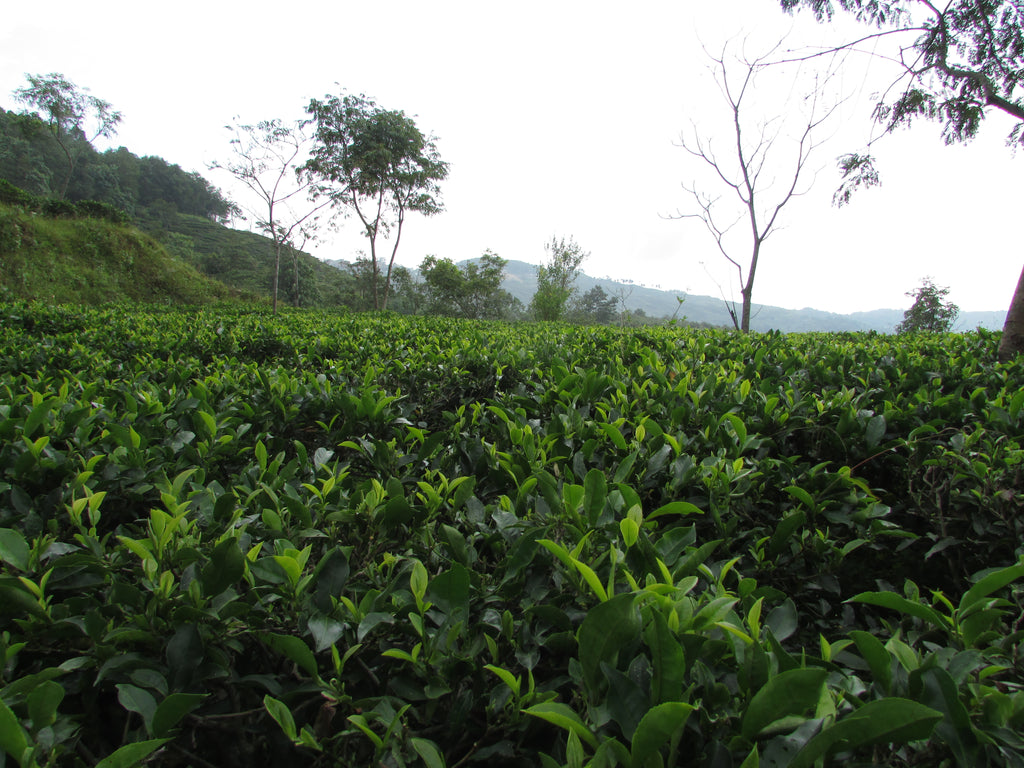
In manufacturing high quality teas such as these, tight control starts early with workers removing big stalks and other "undesirables" like extra-large leaves from the withering trough.
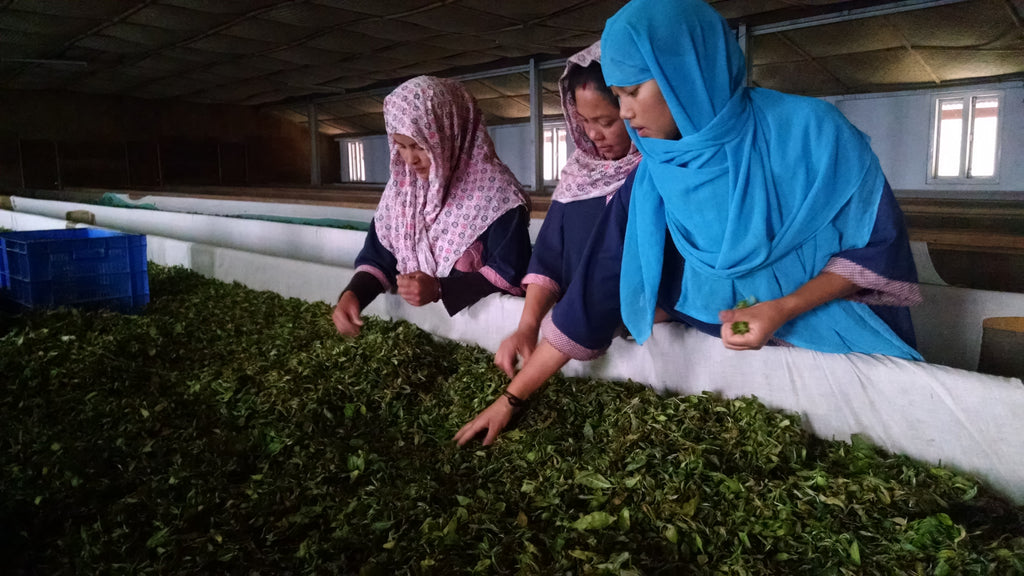
Both new and old machines were in use at the factory. Like the new "panning" machine from Taiwan, used to arrest oxidation by application of heat to the leaves. Many of the processes I noticed here were "foreign" to the Darjeeling-Assam tea tradition, and more aligned to the artisan tea making practices of the far East.
The rolling was done in an old machine from Darjeeling. Leaves are rolled to rupture the leaf surface, release the essential oils and also shape the leaves.
Once the leaves were dried in a small compact dryer (although they did have the giant dryers common to Darjeeling tea gardens), the leaves were once again sorted thoroughly by the workers. Watch this video to appreciate how painstaking the process can be.
In every step of production, right from the fields to the factory, attention to detail was meticulous. The supervisors were all hands on and every body seemed to work tirelessly for hours. You could see why Jun Chiyabari makes some of the highest quality teas in Nepal and the rest of the world.
For the two days I had the immense joy of cupping many teas (must have been over 50...lost count after a while) and every tea had that unique Jun Chiyabari sparkle. Of course the magnificent view from the window of the tasting room just made the entire experience perfect.
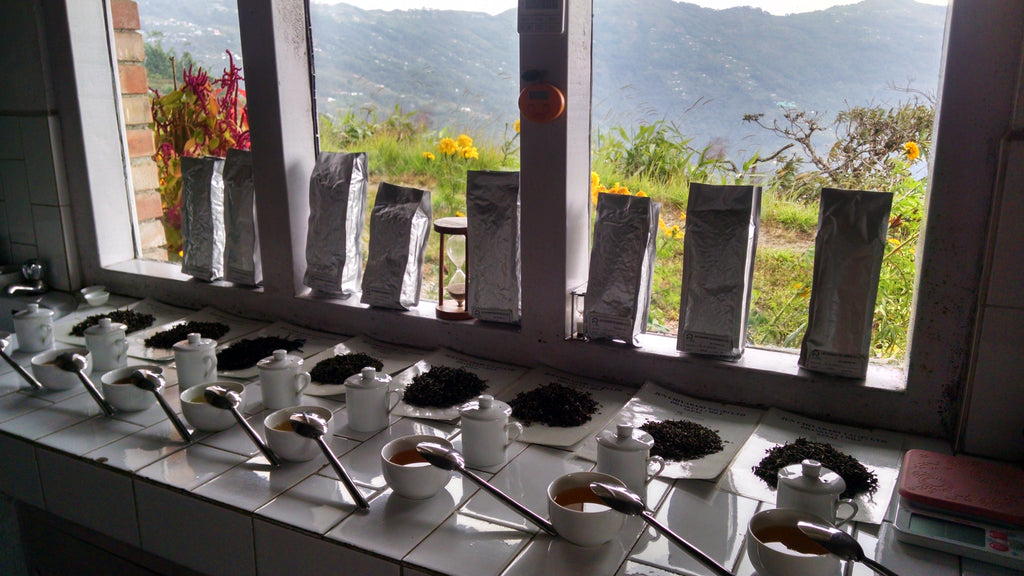
Another remarkable aspect of Jun Chiyabari is the number of women employees; there are more women than men working in the garden. I saw many young ladies supervising work at the factory, including Shanti Syangden who was responsible for preparing cups for tasting as well as supervising withering. She had already been working in the garden for 11 years.
It was sad to leave this beautiful tea garden set amidst some awesome Himalayan landscape. This time I departed a motorbike even as the fuel scarcity continued to worsen. The line for fuel at the gas station went on for a couple of miles in either direction.
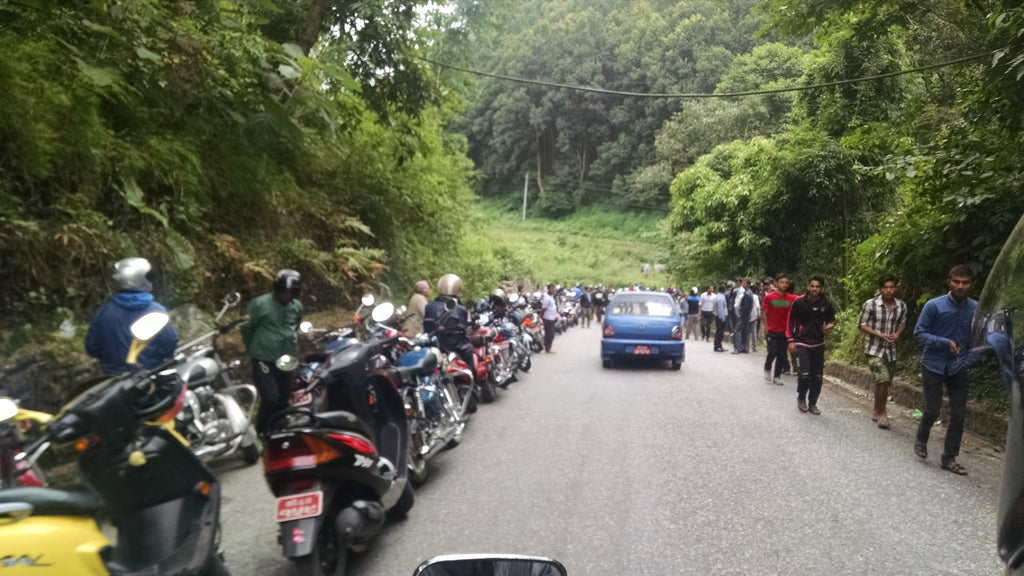
One staff member rode the bike with me to a town 2 hours away from where I could take a bus to the border. Along the way, we stopped at several places. He was trying to organize some gas for the tea factory where the fuel stock was close to depletion. He had no luck. As we rode through the hills I could not help thinking of these man-made challenges, sometimes as steep as these hills, the tea makers here had so many years to contend with. But despite that they have year after year, season after season produced nothing but the finest teas the world has seen. Dear reader let us raise our cups to that!


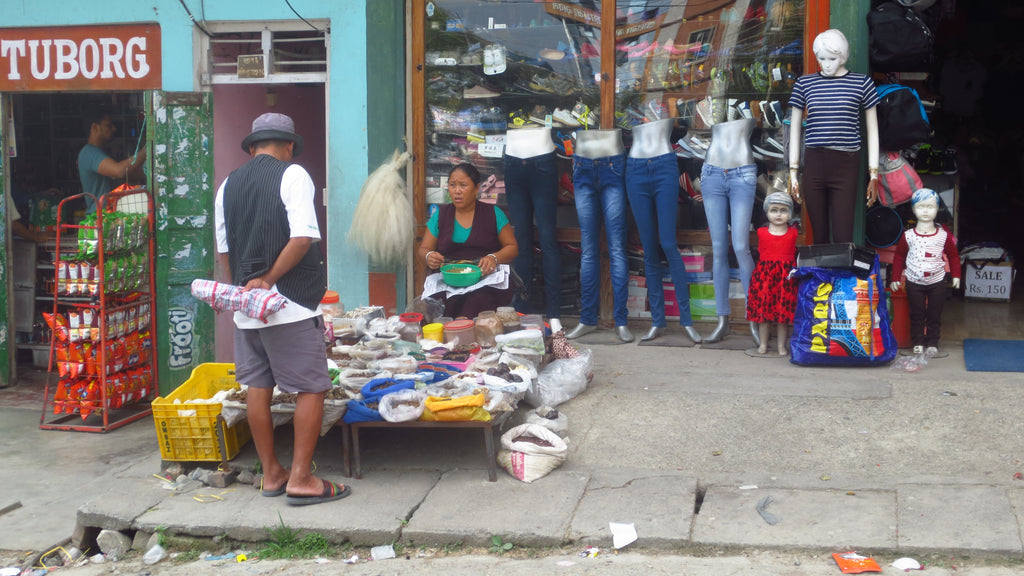
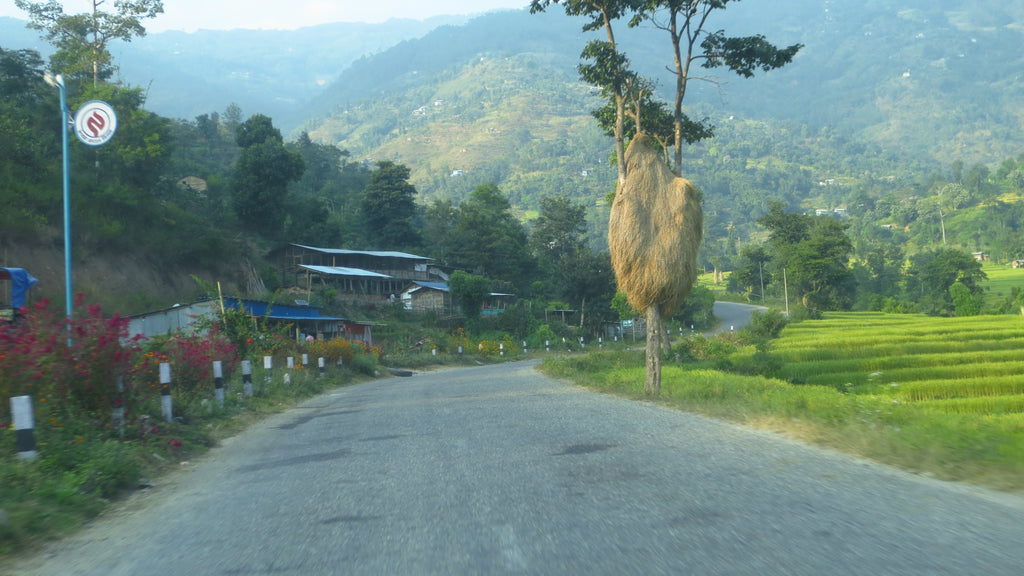
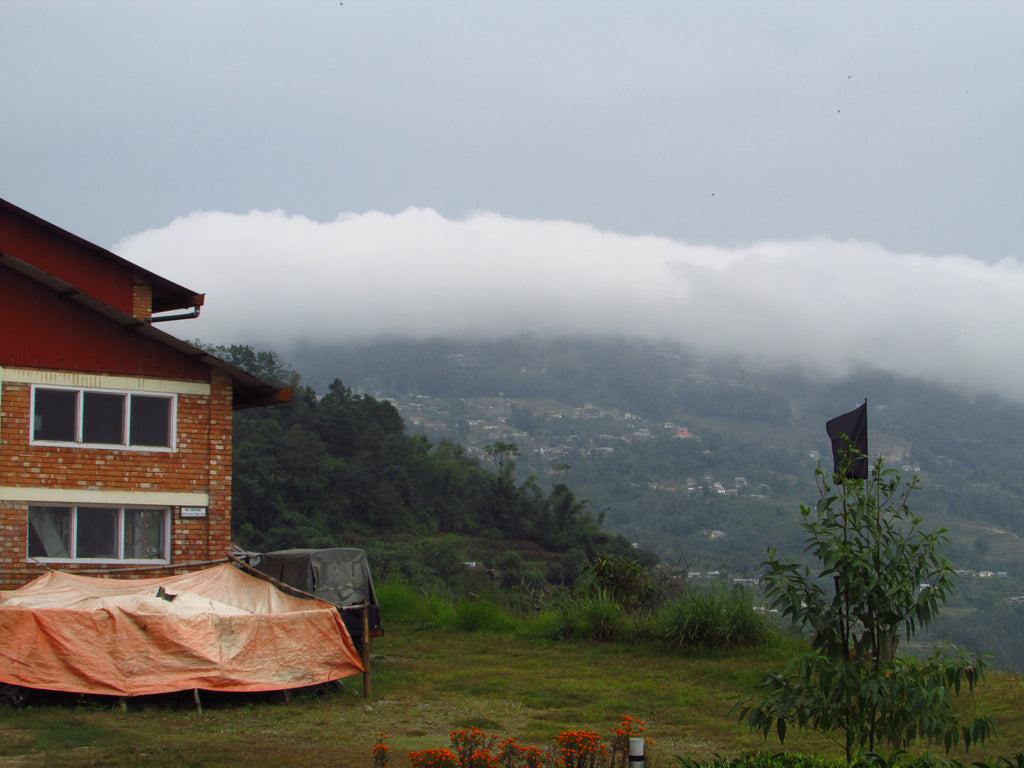
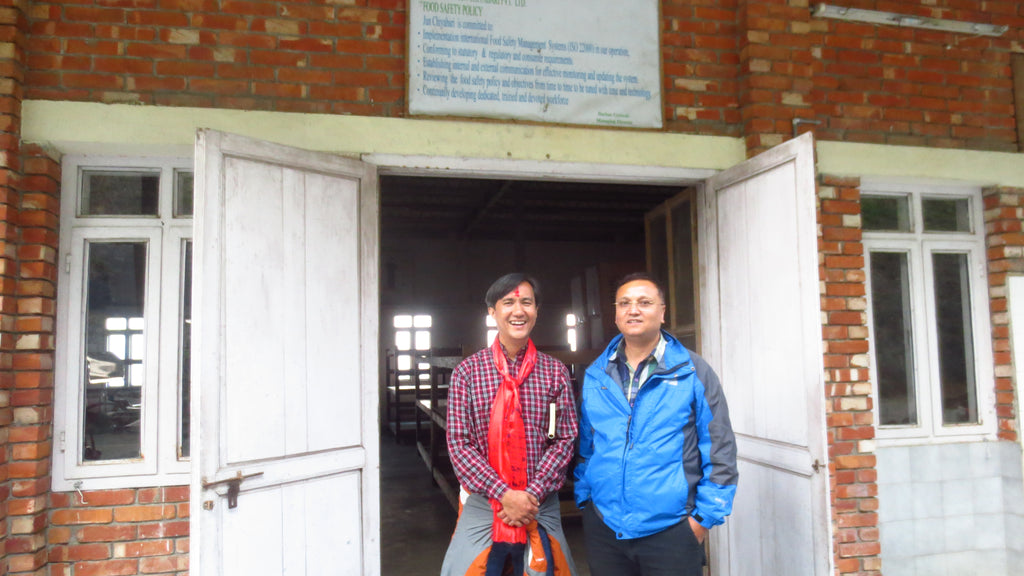
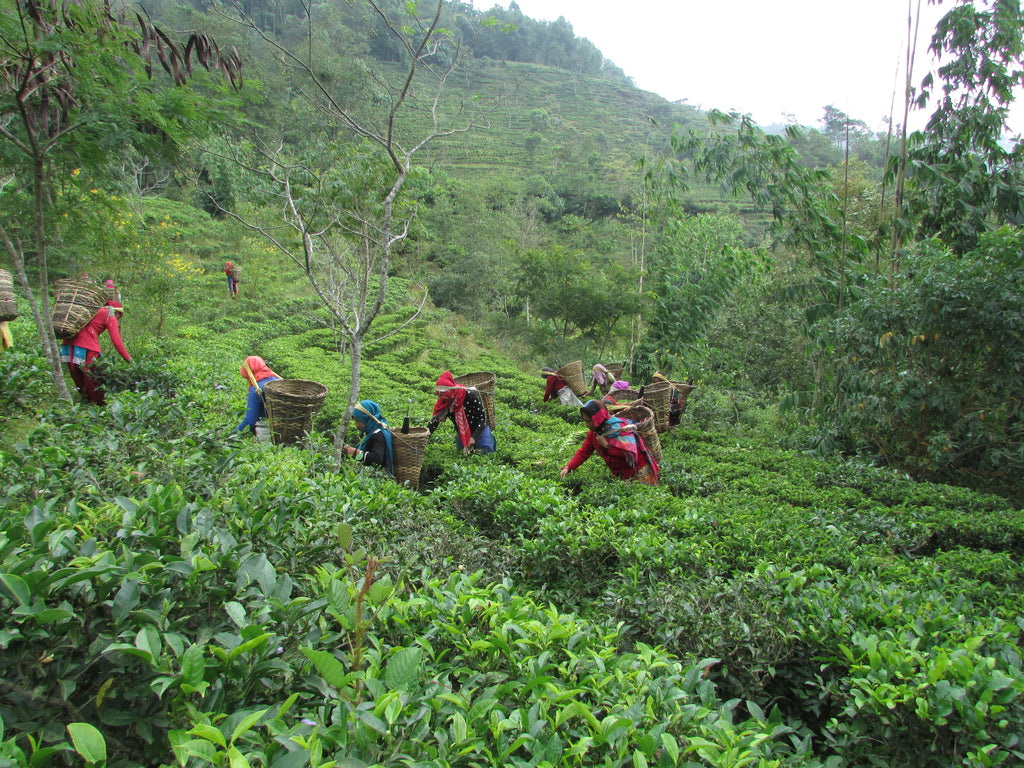
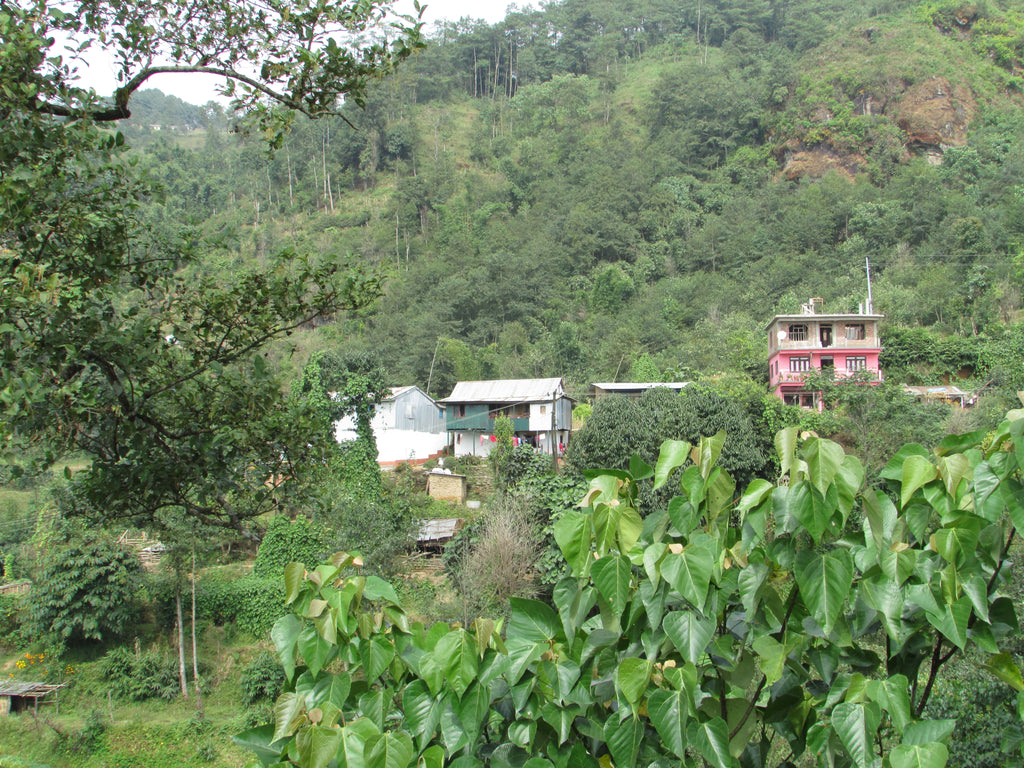
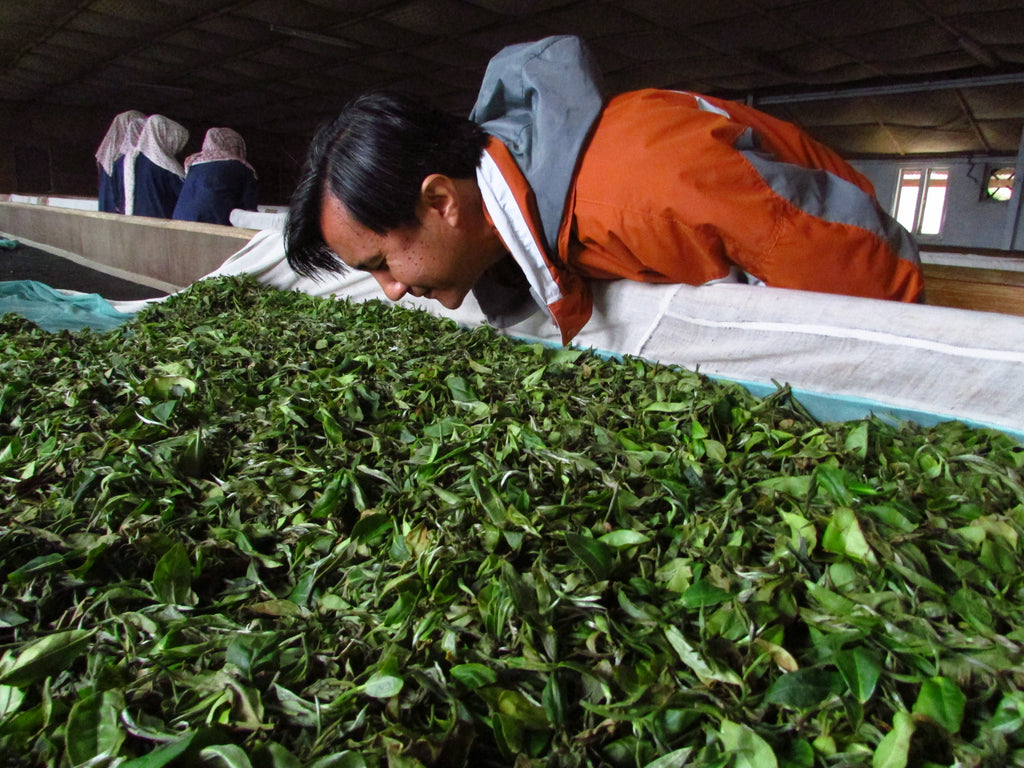
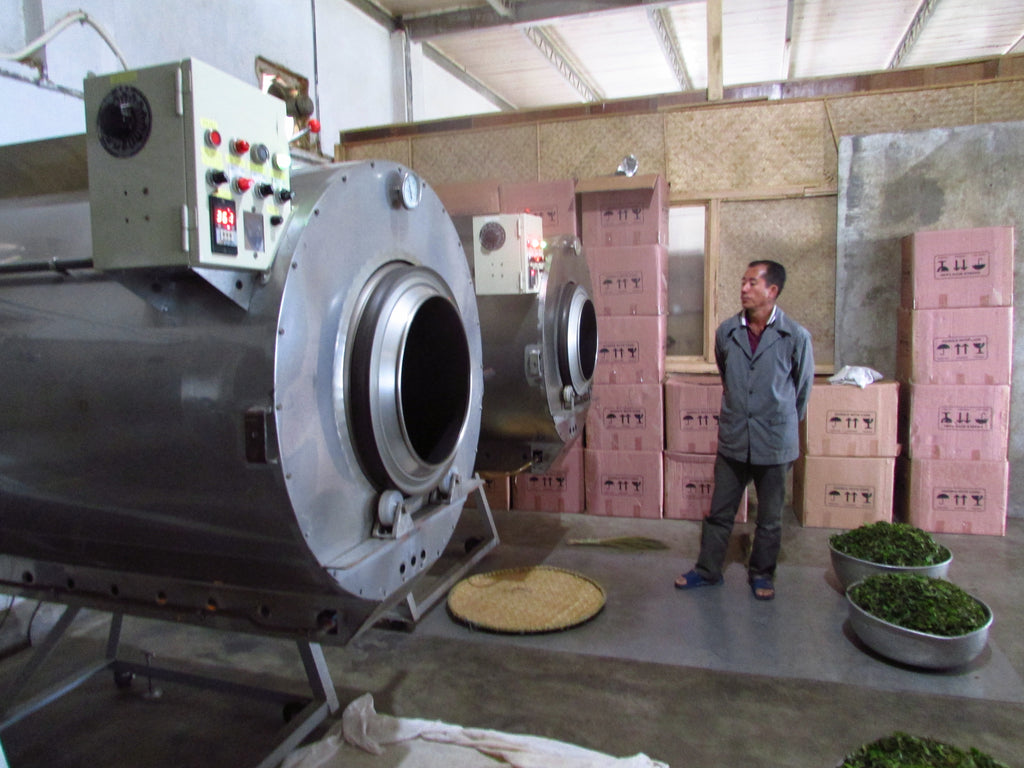
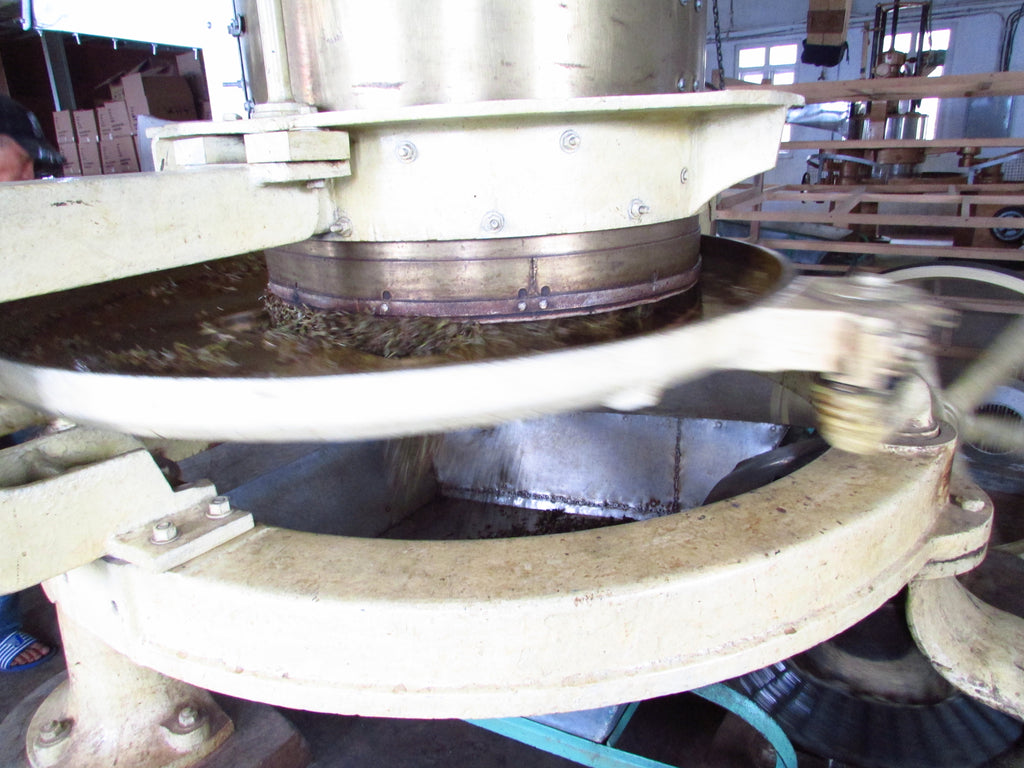
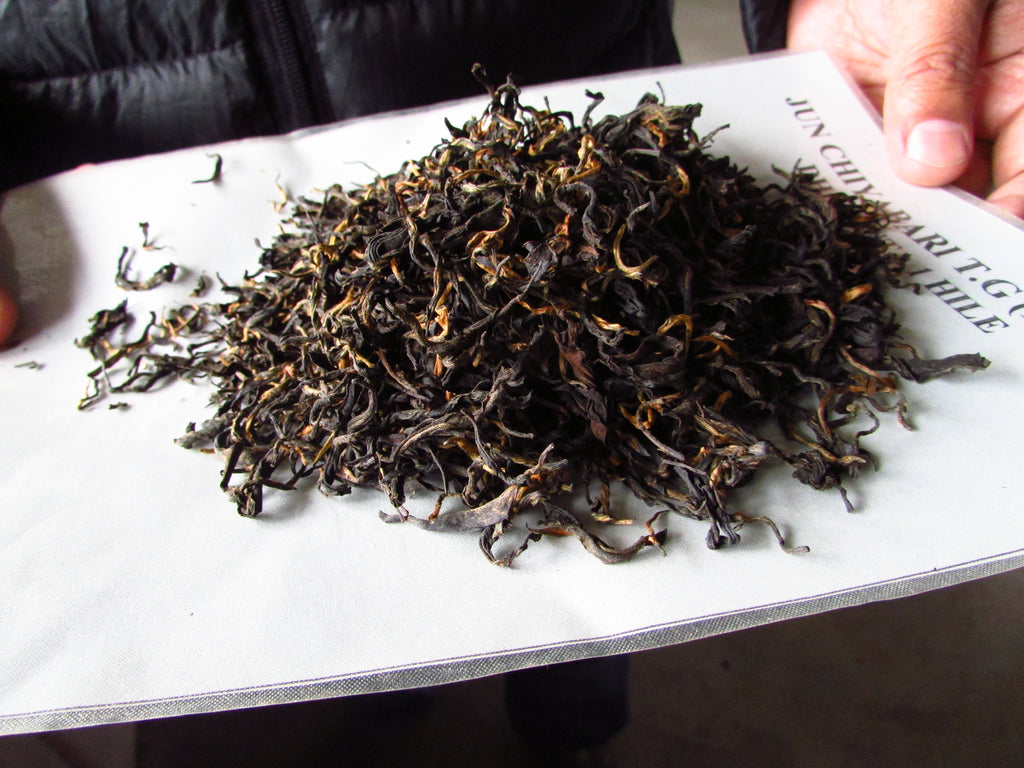
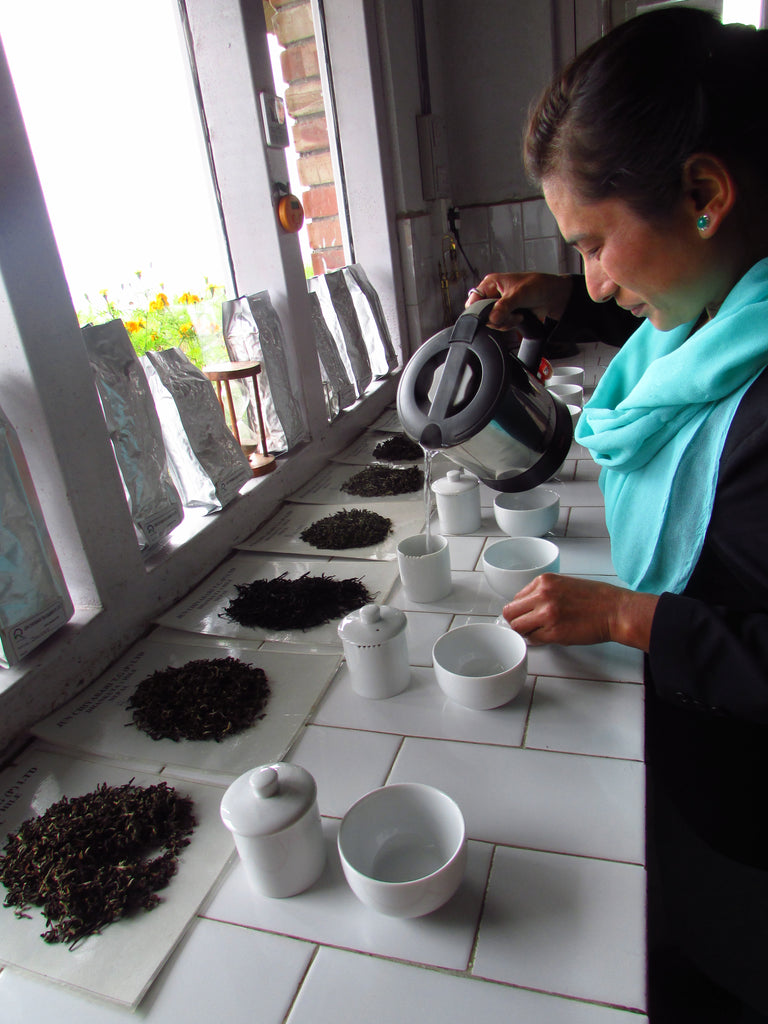
Comments
Leave a comment